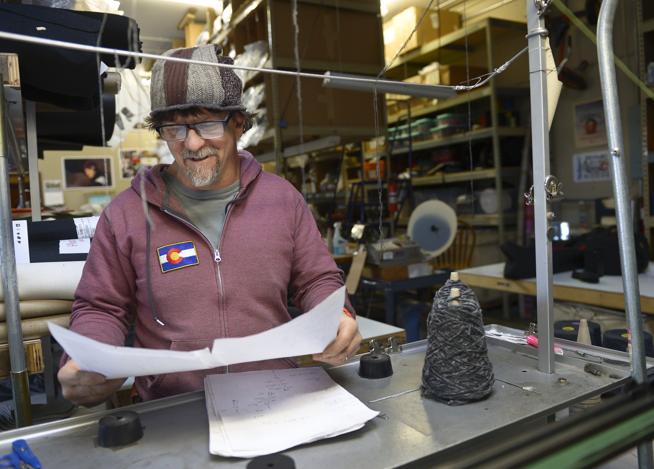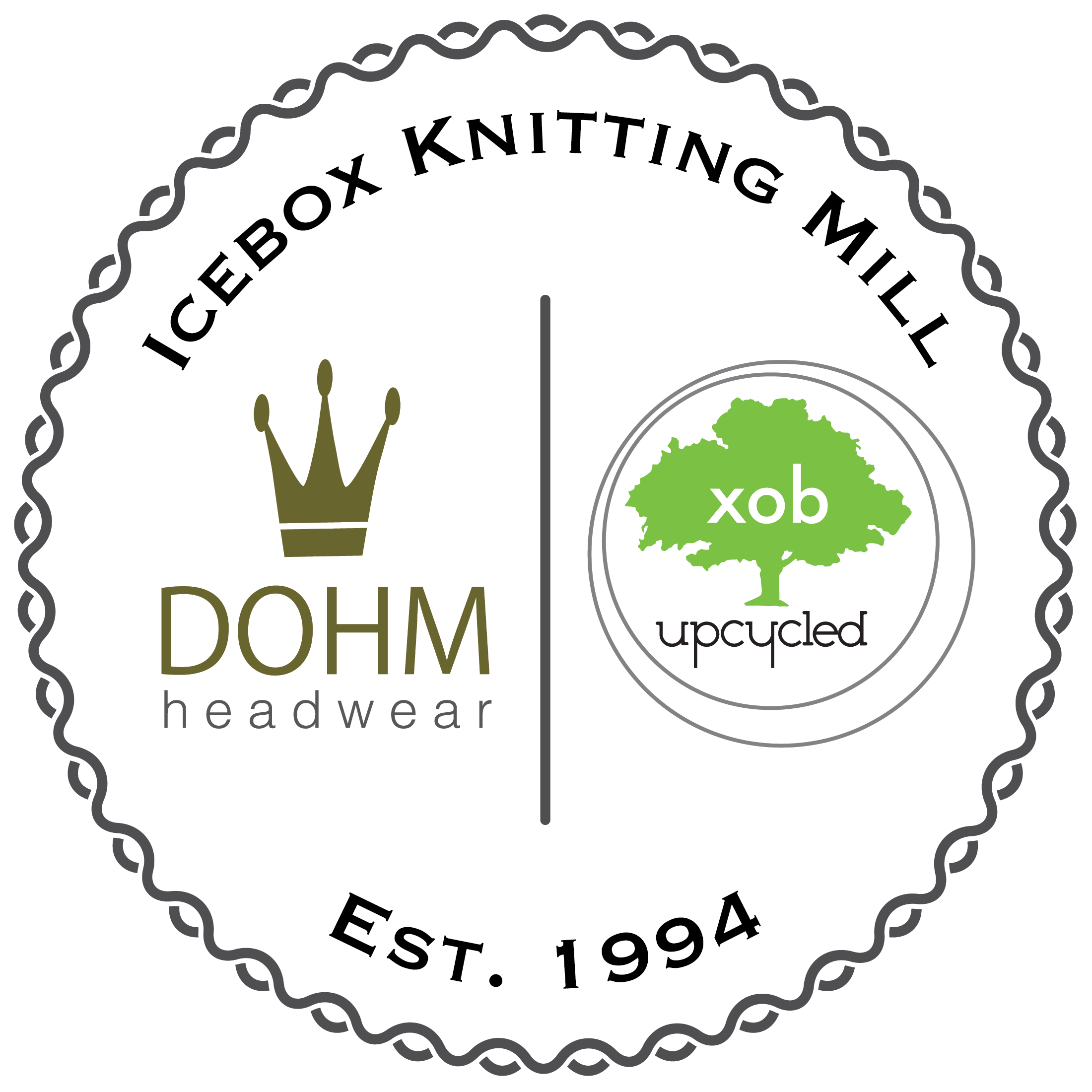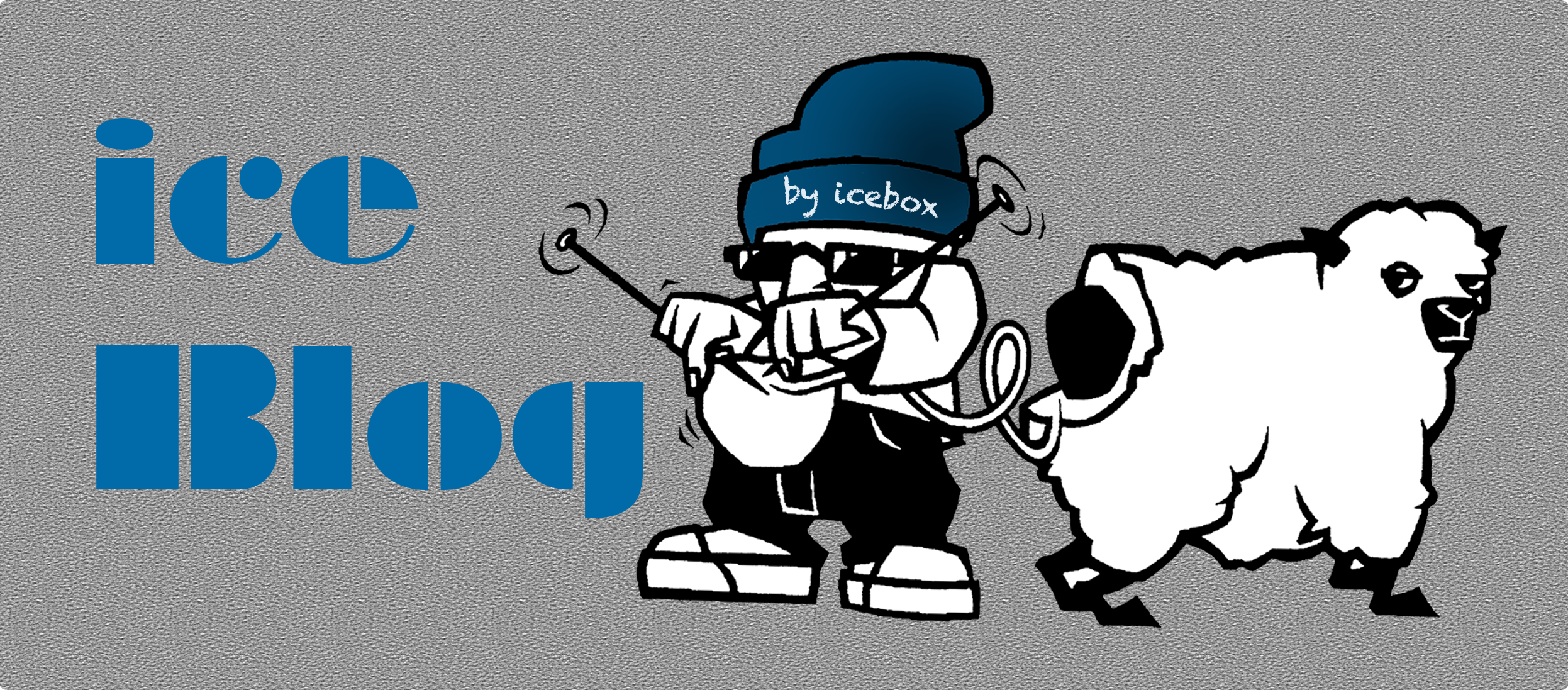5 Questions with Scott Baker of Icebox Knitting Mill
By Pratik Joshi
 Icebox Knitting owner Scott Baker sets up a knitting machine on Wednesday. (Lewis Geyer
Icebox Knitting owner Scott Baker sets up a knitting machine on Wednesday. (Lewis Geyer
Scott Baker’s background in regional and urban planning and entrepreneurship helps him quickly understand the ever-changing business landscape.
Since 2006, when he became part owner of Icebox Knitting Mill, he has learned to respond to the ebb and flow of the market he serves.
To keep pace with growing sales, he helped Icebox move from Boulder to Longmont in 2009. In those days retailers in the outdoor winter market regularly sought out Icebox’s unique headbands, hats and scarves, Baker said. They were made with fresh yarn and re-purposed woolen sweaters in colorful designs, he said. “Each year we introduced three to five new styles.”
Icebox’s upcycled fashion brand is XOB and the traditional knit brand is DOHM.
By 2012, sales were bursting at the seams, and Icebox had a staff of 16, two international distributors and 11 national sales representatives.
But the impact of the recession, off-shore competition, and the growing popularity of ski helmets shrunk Baker’s market size — and Icebox’s employee base to six — forcing him to re-think ways to find customers.
He launched the company’s website in 2012, and began making a range of items including tote bags, backpacks, wallets, straps and dog leashes for private labels. He soon imbibed lean manufacturing as his mantra.
Icebox has now been in business for more than 25 years.
Recently, we met Baker, now the owner and president of Icebox, at his production facility at 1111 Delaware Ave. in Longmont, which has a small area to serve retail customers, to learn the secret of his success.
The following interview has been edited for length and clarity.
1. How has the retail industry changed?
I think retail shelf space in brick-and-mortar stores for small manufacturers is almost extinct. Small businesses can’t provide the big margins to retailers the established brands — with their lower off-shore labor costs — can offer. The head-to-toe gear companies particularly have bitten off a large share of our market. E-commerce channels also have become a crowded place to peddle your wares.
It seems “Made in Colorado” and “Made in USA” is less important for retailers and consumers.
The focus is on brand-building alone for customers to be able to recognize and recall the brand name.
2. What did you do to deal with the changing market dynamics?
We have tried to keep ourselves in all spaces, traditional retail as well as online. We supply to more than 50 stores, maintain our wholesale model and sell directly to consumers on online platforms. We are taking advantage of all the sales channels. Besides, we make goods for private labels, too.
We are less focused on R&D and making sure we are consistent with our offerings. We don’t want to carry excess inventory.
3. What’s the tough part of your business?
I’m the manufacturer, wholesaler, retailer and distributor. Manufacturing is definitely difficult. You have to own all mistakes.
Our prices have increased 10 percent to 20 percent over the last 15 years. Labor costs have gone up at least 50 percent and raw materials have gone up, in some cases 300 percent. Add insurance costs and taxes on top of that.
You’re trying to get the sales. You’re out there constantly shaking the bushes, trying to get hold of the buyers to listen to you.
That means we have to be nimble and look for efficiencies wherever we can find them. I’m constantly tweaking the manufacturing and business models. The bar keeps moving up!
4. What’s your guiding philosophy?
Keep it simple. Don’t make your processes complex.
5. What are the things you’re still learning?
Making sense of the data generated through social media channels. There are so many analytics to figure out what’s working. I have hired specialists to do that.
I do understand it’s important to connect with young consumers and engage with them in a language they understand. It creates a momentum for the brand.

